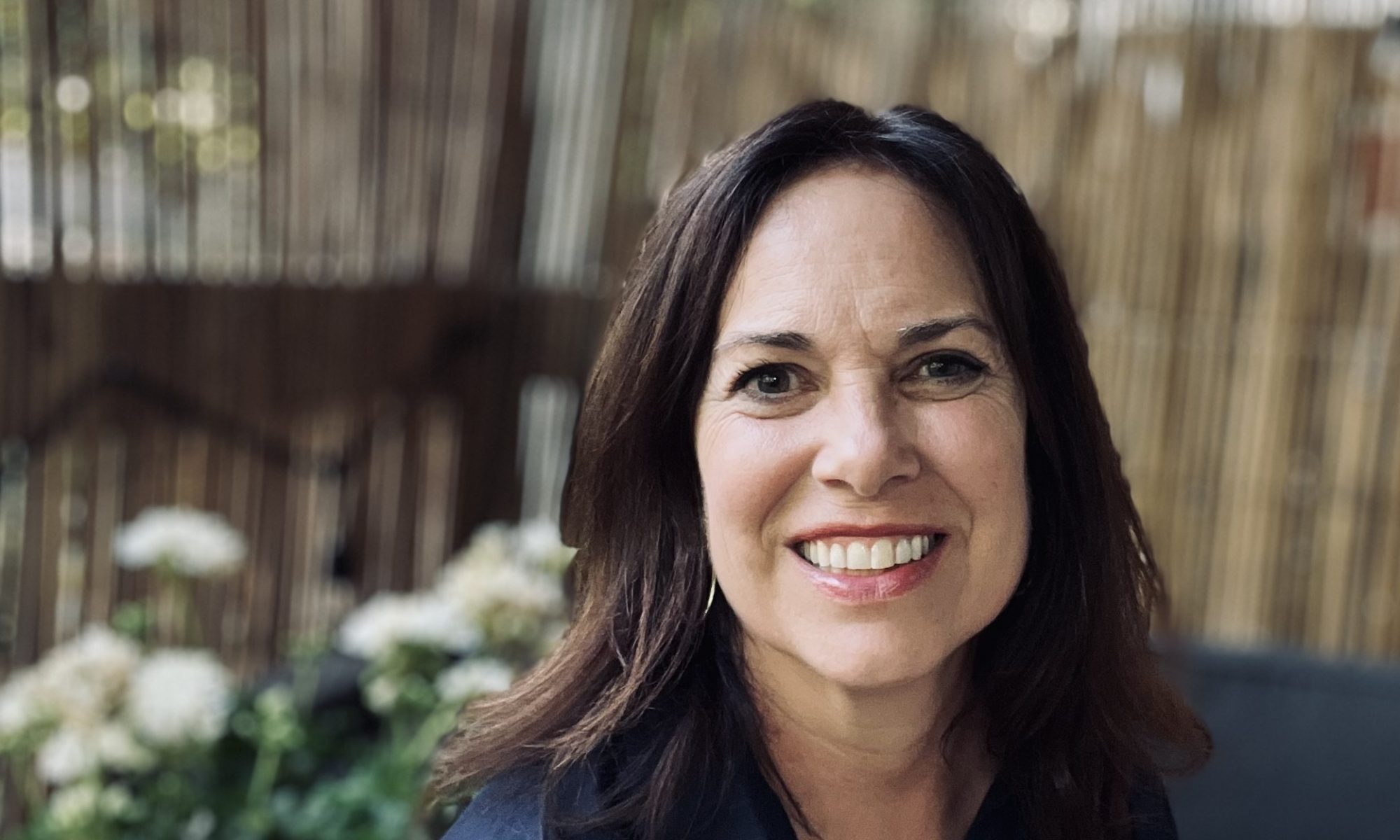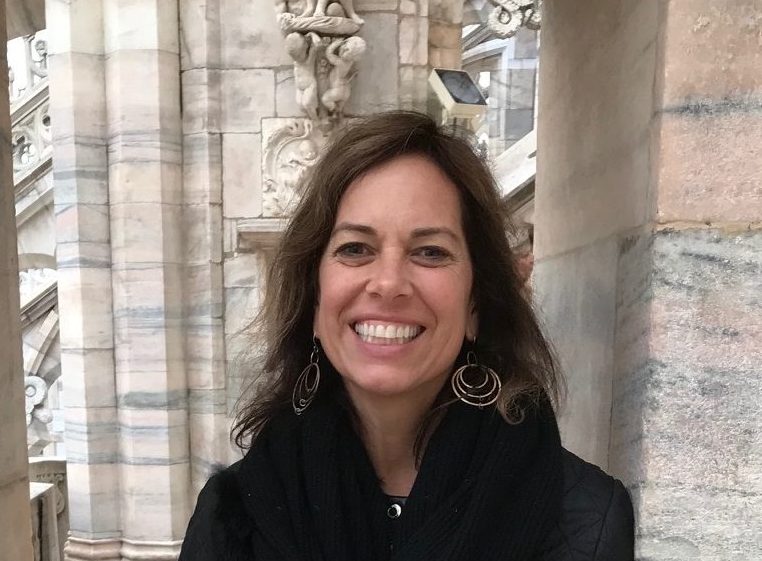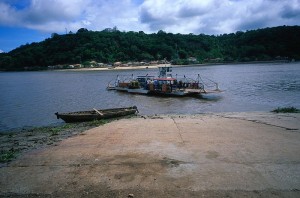The New Republic Publishes My Latest Essay “One Meal A Day”
My latest essay, “One Meal A Day,” appears in the July issue of the New Republic.
Featuring photographs by Chris De Bode, One Meal A Day,” spotlights the hardships faced by refugees who have fled to Cameroon because of climate change and Boko Haram. Constant drought, combined with government limits on farming designed to deter insurgents, have led to mass starvation in the region. “These images do not ask us to look into their eyes and see ourselves,” I write. “They ask us to look at the emptiness of their bowls and reflect on the fullness of our own. We see their hunger through what little they have. We measure their suffering in the most universal unit of all: a single meal.”
For the complete story, please see the July issue of the New Republic.
Can Ecologists and Engineers Work Together to Harness Water For The Future?
The Pangani River in Tanzania is important for many reasons: its three major dams provide 17 percent of the country’s electricity; it sustains thousands of farmers and herders living in the basin; and its flow of fresh water supports humans, industry, and ecosystems. But most interesting might be the innovative water policies that govern withdrawals, infrastructure projects, and ecosystems along its banks.
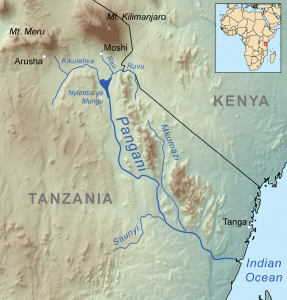 Climate change and population dynamics could cause trouble for the Pangani Basin and many others like it. More people are expected to depend on the flow of fresh water while at the same time rainfall and glacial meltwater from Mt. Meru, Mt. Pare, and Mt. Kilimanjaro are diminishing.
Climate change and population dynamics could cause trouble for the Pangani Basin and many others like it. More people are expected to depend on the flow of fresh water while at the same time rainfall and glacial meltwater from Mt. Meru, Mt. Pare, and Mt. Kilimanjaro are diminishing.
Around the world, water managers are adjusting to a similar quandary. Precipitation patterns and river flows are becoming more uncertain as the past is no longer a reliable guide for the future. Planners are adjusting to changes in the water cycle by integrating policies with flexible structures and ecosystems.
Flexibility Over Scale
In the November 2014 issue of Nature Climate Change, I wrote about how leaders in sustainable water management are finding common ground with two historically antagonistic approaches: engineering and ecology.
I talked with Mark Fletcher, a water engineer and the water business leader at UK-based Arup, a global company of consulting engineers with 14,000 employees. Modular is one way to describe his brand of sustainable water work.
“We had assumed that the world was static,” Fletcher told me. “We knew that the climate was predictable. Due to climate change or due to a changing climate, it is harder to predict things. So rather than build overly conservative monolithic solutions, we now design systems that can be tweaked and twiddled.”
A good example is osmosis desalination. “You literally stack desalination units, much like you would batteries, until you solve your problem,” he said.
From Fletcher’s perspective, the world has no need for more Hoover Dams, given the uncertainty around the global water cycle of the future. I write:
Fletcher favors natural solutions. In New York City, for example, new plans for city orchards and 9,000 grassed bio-swales, which resemble marshy depressions in the land, will slow the flow of storm water from sidewalks to water catchment basins. “Think of them as green sponges all over the city. The water gets soaked up and you avoid pumping every time it rains,” he says. “It’s the gift that keeps on giving.” Furthermore, rather than design water treatment plants that can accommodate extreme rainfall, he prefers multiple local responses that can be changed and adapted, much in the way that a Lego building block is removed and added.
Fletcher suggests that the solution to water management under climate change is beyond engineering. That’s why ecologists John Matthews, coordinator of the Alliance for Global Water Adaptation, and LeRoy Poff, a professor at Colorado State University, have been leading a team of 27 researchers at the U.S. National Socio-Environmental Synthesis Center in Maryland. The team includes economists, hydrologists, policymakers, and engineers. Climate change, they say, has prompted the researchers to work together on an integrated approach to freshwater adaptation. Rather than isolating water management issues within a single field, such as engineering or hydrology, the team’s multifaceted work is developing solutions for decision-makers. Think of their combined work as a chemical reaction. Instead of one element, such as engineering, working in seclusion on a freshwater adaptation project, their form of synthesis science means suddenly more ingredients are added to the beaker.
The research team that Matthews and Poff lead identifies markers of resilience of both infrastructure and ecosystems in basins. They are using the analysis so that ecological principles are incorporated into future water management projects from the very beginning.
Resilience markers include variation of flow, seasonal and temperature changes, and connections to flood plains, for instance. The specific indicators vary from river to river, but the principles remain the same.
Matthews says that the Dujiangyan system in China’s Sichuan Province is a model for integrating policies with engineering and ecology in a sustainable way. Built in 256 BC, the water diversion system still operates today.
According to Kathleen Dominique, an environmental economist at OECD, flexible approaches are necessary to adjust to changing conditions at low cost.
For the Pangani Basin, leaders have established ecosystems as a priority, keeping river flow available to wetlands, riparian forests, and mangroves, and the plan is to adjust water policies with the changing needs of communities. Similarly, the European Union’s water directive is now adjusted every six years to examine all changes and uses of rivers, not only those related to climate change.
For a deeper look at how people are working to become more resilient, improve water security, and preserve ecosystems by incorporating ecological principles into water management, read the complete article in Nature Climate Change.
Superstorm Sandy was a kind of storm scientists don’t understand well.
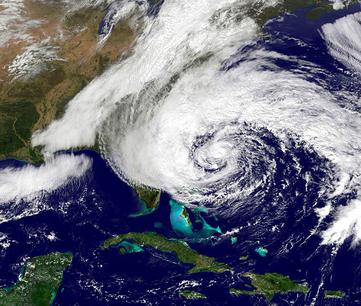 Recently I wrote at Slate Magazine about Superstorm Sandy as she barreled into Maryland. It was 10 am and my editor just asked me to write about whether Sandy’s enormous size was related to climate change. Or, should we assume all storms have a global warming component because climate change has altered the playing field?
Recently I wrote at Slate Magazine about Superstorm Sandy as she barreled into Maryland. It was 10 am and my editor just asked me to write about whether Sandy’s enormous size was related to climate change. Or, should we assume all storms have a global warming component because climate change has altered the playing field?
Lights flickered and sirens blared in my neighborhood. I knew it was only a matter of time before I lost power. So the interviews happened in quick succession. I first reached MIT’s Kerry Emmanuel, who explained to me that Sandy was a hybrid storm–a rare combination of enormous hurricane and powerful winter storm. From my story:
Emmanuel: It is correct to say that in no individual [weather] event can you really make an attribution to anything, whether it is climate change or El Nino or your grandmother had her tooth pulled this morning. You just can’t do it for a single event. It is just the nature of the game. Now, Sandy is an example of what we call a hybrid storm. It works on some of the same principles as the way hurricanes work but it also works on the same principles as winter storms work. Hurricanes and winter storms are powered by completely different energy sources. The hurricane is powered by the evaporation of sea water. Winter storms are powered by horizontal temperature contrasts in the atmosphere. So hybrid storms are able to tap into both energy sources. That’s why they can be so powerful.
An hour later I reached NCAR climate scientist Kevin Trenberth in Colorado. He explained that a few inches of sea level rise had the potential to make Sandy even more catastrophic. Most scientists seem to be reluctant to tie a single storm to climate change, but sea level rise is much more clearly climate-related and disastrous. It doesn’t take much for an extreme event with a little bit of extra sea level to overtop coastal defenses. I asked Trenberth: What should we expect with Sandy?
Trenberth: You have this picture sometimes that sea level is going up at this slow rate of 3 millimeters per year. You stand there and you watch, and finally it gets up to your toes or it gets up to your ankles. You think finally, I better do something about this. That’s not the way it works. Sea level-rise happens episodically. One minute it looks benign and then a week later suddenly a storm or hurricane comes along like Sandy, and there are major waves, 20-foot waves, and major storm surge, and tremendous damage occurs.
He went on to say:
Even if the storm just happened to do exactly the same things it’s doing anyway, the fact that sea level went up 6 inches last century, and that sea level is somewhat higher now than it has been at any time in recent history, means that all of the coastal regions are experiencing new levels of pounding and erosion. I expect there could be some quite surprising events along some of the coast as a result of that.
In my story headlined Hybrid Hell published at Slate Magazine (their Science and Health section is excellent, check it out!), you can read the complete interviews that I tapped out on my keyboard as water flooded my basement and tree limbs fell around my house.
Climate Concerns in Boardrooms, But in Business Magazines?
 Mention the words business risk and climate change to Howard Kunreuther of Penn’s Wharton School, and he’ll tell you about big changes in risk management in the corporate world. Yet major business periodicals appear to lag behind corporate boardrooms in increasing the awareness of risks posed by a changing climate.
Mention the words business risk and climate change to Howard Kunreuther of Penn’s Wharton School, and he’ll tell you about big changes in risk management in the corporate world. Yet major business periodicals appear to lag behind corporate boardrooms in increasing the awareness of risks posed by a changing climate.
In a story headlined Risky Business, published recently at The Yale Forum, I took a look at how U.S. businesses now are facing major changes in their assessment of catastrophic risk. Floods and droughts are increasingly coming into focus. Supply chain management is now a big concern, because natural hazards around the world can disrupt business at home. Here is how the story begins:
As little as ten years ago, few of the world’s largest corporations issued sustainability strategies to shareholders, reported on greenhouse gas emissions, or disclosed climate change risks. Today, more than 80 percent do.
But while catastrophic risk and sustainability concerns associated with climate change now are increasingly reflected on corporate agendas, leading business magazines — no doubt suffering some of the same economic and growth challenges facing mass media overall — show little real appetite for substantive climate-related reporting.
Nevertheless, climate news important to the business sector clearly is happening. For the first time, G20 leaders put disaster risk management on the agenda at their 2012 summit in Mexico. And U.S. corporations have made substantial progress on emission reduction goals, according to a September 2012 report by the Carbon Disclosure Project, a system for companies to measure and disclose environmental information. As emissions reductions and physical risks of climate change — including drought, wildfires, and floods — raise concerns in boardrooms and among finance ministers in the world’s richest countries, business press coverage appears not to be meeting needs, leaving things to specialized high-priced “insider” newsletters to fill the void.
Digging into climate change, students find more than science
To find the vanguard of climate education in the United States, keep an eye on four teachers in Maryland’s Wicomico County public school district.
Using field trips, editorial cartoons, even parent objections, they’re taking climate change far from the science classroom.
By Lisa Palmer
for the Daily Climate
BERLIN, Md. – Fifth grader Aman Shahzad looked closely at the level attached to the plumb line. “Lower, lower,” she called out. “OK! The bubble is in the middle.” Her classmate, holding the wooden surveyor’s pole, read the measurement: 14 centimeters.
The two students were from Pemberton Elementary School in nearby Salisbury, Md., the first to participate in a new, three-month interdisciplinary unit called “Investigating Climate Science” that spans science, math, economics and government. On this day in early spring on Maryland’s eastern shore, they were on a field trip to Assateague Island, measuring the slope of the beach as the first step in a lesson on sea-level rise.
The unit represents the vanguard of a nationwide effort, pushed by education and science groups, to broaden climate change education into a variety of physical and social science classes in public school curricula.
Yet even here, in one the most sophisticated climate change education units in the nation, teachers still feel the need to balance what the world’s scientific bodies know about climate change with what is represented in the public dialogue, avoiding terms like “global warming” and including a lesson questioning humanity’s impact on the problem.
Honing critical thinking
The three-month unit is designed for middle school and high-achieving elementary students. It was developed by four teachers in theWicomico County Public Schools’ gifted and talented program, with help from environmental educator Carrie Samis of the Maryland Coastal Bays Program. Lessons focus on climate science and hone critical thinking skills.
- In one lesson, students examined and analyzed editorial cartoons related to the proposed Keystone XL pipeline, and discussed the advantages and disadvantages of building a pipeline to ferry crude oil from Alberta’s tarsands to the United States.
- Another lesson examined the possible causes of changing climates, differentiating between anthropogenic and natural ones. Students studied greenhouse gases, climate indicators, and carbon footprints, then predicted positive and negative effects climate change may have on agriculture, the economy, infrastructure and wildlife.
 The full-day field trip to Assateague Island showed students how vulnerable the barrier island is to sea-level rise. They conducted a mock debate, acting as local stakeholders, on the impacts of salt marsh migration.
The full-day field trip to Assateague Island showed students how vulnerable the barrier island is to sea-level rise. They conducted a mock debate, acting as local stakeholders, on the impacts of salt marsh migration.- One lesson, called “the controversy,” probes “both sides of the story.” It examines uncertainties in historic data, fossil records, ice core samples and tree rings, posing the questions, “How do we know?” and “Where is the proof?”
- Several lessons are devoted to developing climate action plans and deciding what – if anything – students should do about climate change.
The diversified approach reaches and engages students via a number of different avenues. Gabe Dunn, a fifth grader at Westside Intermediate School, in Hebron, Md., liked the unit’s hands-on science and civics activities, especially debating the viability of land development amid marsh migration and sea-level rise. Cade Stone, a fifth grader at Pemberton Elementary, found the editorial cartoons appealing.
A need for ‘balance’
The unit has generated controversy.
Months before the lessons began, parents voiced concern over the contents and stressed a need for “balance.” Virtually every scientist studying atmospheric and earth sciences says climate change is real and that humans are the cause. But some parents sought inclusion of opposing theories, such as other causes and doubts that climate change is occurring.
In response, Nancy Rowe, one of four teachers developing the unit, devised lessons to show that climate change is not all caused by humans. “We want to be balanced,” Rowe said.
That desire of balance lead the program’s creators to avoid terms like “climate change” or “global warming” in lesson plans, Rowe said, “which would have sent a biased point of view.”
Scientists and educators who conduct workshops for teachers on climate change say this “false-balance” is not the correct approach.
“Human activities are the drivers of recent climate change,” said Susan Buhr, a climate scientist and director of the education and outreach program of the Cooperative Institute for Research in Environmental Science at the University of Colorado. “Teachers need to discern what is credible and not credible, and part of the job of teachers is to provide signposts to that end.”
‘Science has to lead’
Debate over the tradeoffs and values of how to respond to climate change is appropriate for environmental education, Buhr and other educators say. However, the strong evidence that supports the climate science and human causation of climate change doesn’t warrant equal weight with minority claims, often disputed by other research, that are not credible, they add. “Science has to lead,” Buhr said.
 Teachers drafting the program said criticism – or the desire to avoid it – influenced their decision to include alternate views. Parental opposition may have been small, said Samis, who helped write the climate curriculum for the Wicomico students. But it “has been at the forefront of my mind the whole time.”
Teachers drafting the program said criticism – or the desire to avoid it – influenced their decision to include alternate views. Parental opposition may have been small, said Samis, who helped write the climate curriculum for the Wicomico students. But it “has been at the forefront of my mind the whole time.”
After a local newspaper reported a front-page news story of the Wicomico County schools’ field trip to Assateague, readers accused the teachers of “brainwashing the kids with biased information” that climate change is occurring. “That hurt,” Rowe said. “We are really trying to expose them to both sides so that they can make their own decision about what to think.”
Lively lessons
Buhr disagrees with efforts that allow kids to make their own decisions about established scientific conclusions. “We don’t ask students in science class to make up their own minds over whether they believe in photosynthesis or if the earth is round,” she said. “Why would we be doing that here?”
– Nancy Rowe, teacher
Still, the teachers note that teaching the controversy has made for lively lessons in civics, politics and skeptical thinking – part of the goal of the whole unit. And the science is getting through.
The field trip was proof of that.
On this unseasonably warm March day, 160 students on a field trip from the Wicomico County gifted and talented program learned how climate change, sea level rise, and salt marsh migration will affect Maryland’s coastal areas. They also learned about economic, cultural, and social policies and decisions that local land owners, farmers, watermen, developers, and elected officials may have to make as the climate changes.
Science is really a process of discovery, of skepticism, of challenging long-held constructs, and controversy. By addressing parental concerns, discussing the different newspaper stories and linking student experiments to real-world situations, Rowe and her colleagues are, in effect, teaching the kids how to do science.
“We aren’t hiding anything,” Rowe said. “The kids love seeing both sides of a story.”
© Lisa Palmer 2012. All rights reserved.
Lisa Palmer is a freelance reporter in Maryland. Her work has appeared in Scientific American, Nature Climate Change, Fortune, and The Yale Forum, among other outlets. DailyClimate.org is a foundation-funded news service that covers climate change.
Photos of Wicomico County Public Schools students on a field trip to Assateague Island © Lisa Palmer.
This story was originally published by The Daily Climate.
Water: The Next Sustainability Bombshell
Oil might hog the headlines, but many experts believe water is the commodity that’s particularly bad for consumer goods groups.
When brewing giant SABMiller tentatively released its “blue sky” plans in 2010 for a floating brewery that could be towed from port to port depending on where water was most plentiful, the business press immediately leaped on the idea of a “beer ship.” Many dismissed it as fanciful, or a publicity stunt. But what SABMiller and other multinationals have realized is that water scarcity is becoming business critical. Restricted access to water, or higher costs to use it, is every bit as vital to their future planning as the better-known issues surrounding oil.
The Water Resources Group, an industry body, says water supply will fall by 40 percent globally before 2030. Even allowing for a margin of error, that has profound implications. The drinks industry is a visible and intensive user of water, but others are equally at risk — food and consumer goods manufacturers are also heavy water users, and any industry which relies on silicon chips or paper-based products will face a similar chain reaction. Little wonder Nestle chairman Peter Brabeck-Letmathe has mate water the company’s sustainability priority and said in 2008: “I am convinced that if we carry on as we are, we will run out of water before we run out of oil.”
“We all know water is both abundant and scarce. It covers about 75 percent of the earth’s surface, both in liquid and frozen form, but only around three percent of this water is fresh and able to be used,” says Jo Beatty, a Director in KPMG’s Climate Change and Sustainaiblity practice in the US. Growing populations, rapid industrialization and climate change form a triumvirate of pressures on water’s future.
Water is a global concern, yet its impacts are local. Beatty lists them as: physical risks, such as reduced water availability and quality; regulatory risks from increased standards and licensing requirements for water abstraction, qualilty, reuse and recycling, and waste water discharge; and reputational risks, including opposition to local water withdrawals and discharges.
“One reason that the issue of water goes unexamined by many leadership teams is that water is low cost. But while it may be cheap, that in itself represents a risk,” said Dr. Nick Wood, associate director with KPMG’s Climate Change and Sustainability practice in Australia. “When we do our water strategy work we turn this around. Where water supplies are at risk, we examine costs associated with alternative sources of water.”
Wood said companies are beginning to understand that the water value supply chain is full of blind spots and market failures. “Water has not been subject to strategic thinking by users or transparent economic planning by governments. The result? It may be cheap, but it can run out. Its price is not its value.”
No single business sector is exempt from the risk of water scarcity. Neither is any region. While many countries in the Middle East have spent heavily on desalination, the World Wildlife Fund (WWF) says the situation is “critical” in India, Australia and South Africa.
Barton Alexander, Chief Corporate Responsibility Officer at Molson Coors, says water issues affect his business across the world. And the amount of water used is only part of the equation. He points to his cotton shirt as an example. “How much water is in this? Do you care where it came from? Was the cotton grown in an area where the water came from natural rainfall, or was it grown where the water was pulled out of the ground for irrigation in an area where then people have less access to water?”

While Alexander says Molson Coors always strives for increased water efficiency, other factors make sustainability decisions complex. A facility in Canada recently changed the way it washes returnable bottles. The company found it was more energy efficient to use cold water in the new process, but this also meant more water was used. “We had to think about which was more important: energy savings or water use. There was adequate supply so we went with the cold water process and reduced our carbon footprint,” Alexander said.
A strategic focus is the best way to tackle the issue, says Wood. “Many companies tell us that they use four liters of water to make one liter of drink, But they can’t say whether the fruit providers, dairy farmers, or hop growers will be able to provide them with raw materials or even be in business next year,” said Wood.
Wood recommends conducting a water risk management right across the supply chain, factoring it into risk management and continuity planning. The results can be illuminating — and alarming. The Water Footprint Network estimates that the full life cycle of a glass of apple juice includes 190 liters of water, while a T-shirt uses 2,700 liters. Such estimates are open to question, but there is little doubt that intensive production processes, including industrial agriculture, are a major drain on water resources.
Suhas Apte, Vice President of Global Sustainability at Kimberley-Clark, wrestles with water on a daily basis. He says the company has used a variety of methods for assessing the impact of water scarcity, including a conservation program and a global risk assessment which included suppliers. “We extended the risk assessment to provide a multi-criteria analysis that brings in a number of factors such as reputational risk, water efficiency, population access to water and sanitation, regulatory risk, and future risks,” he said.
Kimberly-Clark’s sustainability team also led a water life cycle assessment on its toilet tissue brands. “It revealed that 75 percent of water use was due to toilet flushing in the home,” Apte said. The company launched a SmartFlush device which saves up to one liter of water per flush.
KPMG member firms across the globe work with clients to conduct water risk assessments for their operations and supply chains, but most of the emphasis is on identifying the metrics companies need for strategic planning: “Companies should understand the real value of water and the associated economics that impact the company. These include capital investments for new or retrofitted infrastructure and added operational costs for supply, treatment and disposal,” said Beatty.
Developing economies are wrestling with complex supply chain issues. In some areas, the local population may lack access to clean water. PepsiCo is one of a number of multinationals to formally recognize the “human right to water.” Others, says Beatty, may decide not to relocate or expand manufacturing operations in areas which could face future water issues.
There is still hope. Beatty says far-sighted companies can both improve water resources in their local communities, and adopt a “catchment” approach to water use that engages both upstream and downstream use. Those who see water as the “new oil” should consider the reality: some of the finest scientific minds are working to develop viable alternatives to oil. There is no substitute in the pipeline for H20.
This article was first published in the April 2011 issue of Consumer Currents and is copyrighted.
Earth’s vitals signs go unmeasured
Satellites are eyes and ears for many professions, but their observations give scientists who study climate change the only means to precisely monitor Earth systems worldwide. The New York Times’ recent cover story on glaciers touched on this point. But satellites aren’t built to last forever. So when there’s a gap in observations, one scientist told me that “we basically close our eyes for awhile.”
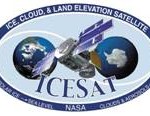
I talked with senior scientist Thorsten Markus, head of the Cyropheric Sciences Branch at the NASA Goddard Space Flight Center. He said, “It is critical that we continue those time-series observations. For climate change, the satellite provides the only means to truly monitor the Earth on a global basis. There is simply no other way.” When satellites “go dark,” they rob scientists of critical data needed for monitoring climate change and verifying international agreements, just as a critical mass of global players is agreeing that such agreements are essential to the future health of the world’s people and economies.
Artists can scream. Scientists can’t.
Of all the ways the media has tried to communicate the need to adapt to the consequences of climate change, two points stand out. One is adequately addressing the nuances of science. The other is how to make climate change adaptation and mitigation issues tangible to the public. Now, artists have begun to address both. And, increasingly, they are getting their inspiration from scientists and researchers.
My Yale Forum article, “Artists can scream…Scientists can’t,” was recently featured at the Institute for Sustainable Communities’ Climate Leadership Academy on Adaptation Resilience. The event drew 16 teams from cities around the country to learn about promising practices in climate adaptation at the urban scale. The intensive peer-learning workshop focused on ways to engage citizens more effectively on adaptation. My Yale Forum article explains how scientists realize that pie charts and graphs don’t tell the whole climate change story.
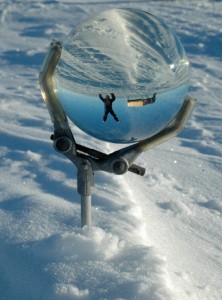
Last week at Boston University (my alma mater), scientists, filmmakers, artists, writers and cartoonists assembled to discuss the public perception of climate change, which is strongly influenced by the media and the arts. I’ve been writing about the public perception of climate change for over three years. I’m always looking for new examples of ways that visual media advances pubic understanding of climate change and its causes, and of the science-based solutions. If you see an art exhibit, cartoon, or film about climate change that’s based on science, share your ideas below. [That’s Simon Faithfull’s self-portrait in Antarctica, featured in “Ice Blink.”]
With Federal, Global Regs at Standstill … Courts Become Front Line on Climate Change
Climate change litigation is in its infancy, but experts predict growth in number of battles fought within the legal system.
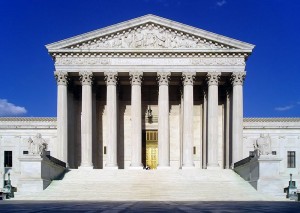
Seven years ago, the United States court system became involved with making decisions on climate change. Today, in the absence of federal legislation, courts more and more are expected to play a key role on greenhouse gas regulation and on issues arising from claims of liability linked to alleged climate-related damages.
An especially notable case arose in 2003 when the Bush administration’s Environmental Protection Agency determined it lacked authority to regulate carbon dioxide emissions as pollutants. Massachusetts and 11 other states challenged that decision. The Supreme Court eventually heard the case, Mass. v. EPA, and in 2007 ruled in favor of the states (see Yale Forum article) .
The Supreme Court may address climate change again this term, potentially deciding whether climate cases can proceed as courts become front lines for the climate fight. [See Yale Forum for my complete article]
